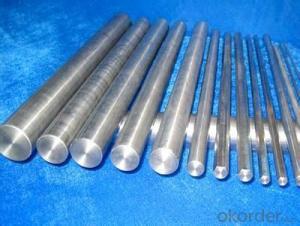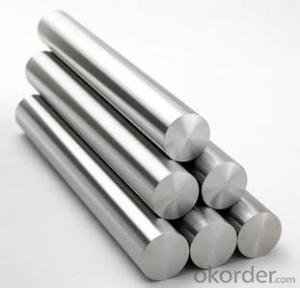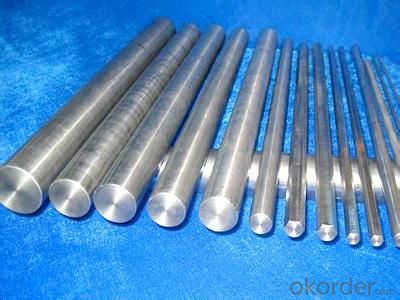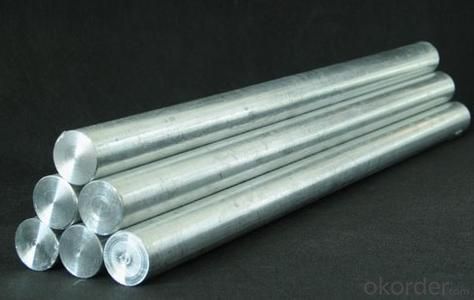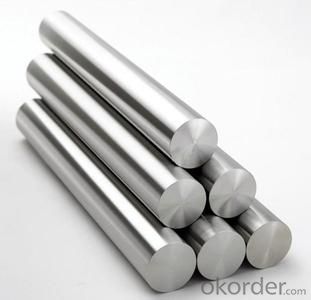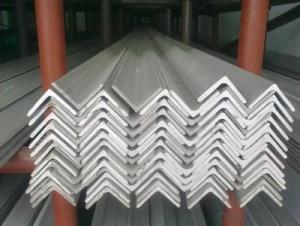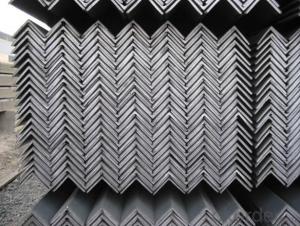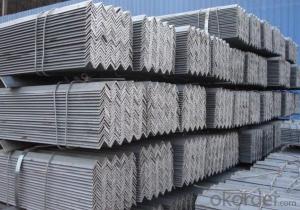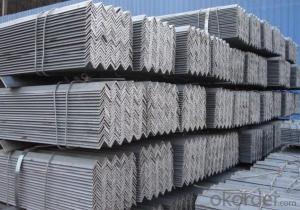Angle Steel Hot Rolled GB Q235 OR Q345 20MM-250MM
- Loading Port:
- China Main Port
- Payment Terms:
- TT or LC
- Min Order Qty:
- -
- Supply Capability:
- -
OKorder Service Pledge
OKorder Financial Service
You Might Also Like
Product Description:
OKorder is offering high quality Angle Steel Hot Rolled GB Q235 OR Q345 20MM-250MM at great prices with worldwide shipping. Our supplier is a world-class manufacturer of steel, with our products utilized the world over. OKorder annually supplies products to European, North American and Asian markets. We provide quotations within 24 hours of receiving an inquiry and guarantee competitive prices.
Product Applications:
According to the needs of different structures, Angle can compose to different force support component, and also can be the connections between components. It is widely used in various building structures and engineering structures such as roof beams, bridges, transmission towers, hoisting machinery and transport machinery, ships, industrial furnaces, reaction tower, container frame and warehouse etc
Product Advantages:
OKorder's Steel Angle Steel Hot Rolled GB Q235 OR Q345 20MM-250MM are durable, strong, and resist corrosion.
Main Product Features:
· Premium quality
· Prompt delivery & seaworthy packing (30 days after receiving deposit)
· Corrosion resistance
· Can be recycled and reused
· Mill test certification
· Professional Service
· Competitive pricing
Product Specifications:
Manufacture: Hot rolled
Grade: Q195 – 235
Certificates: ISO, SGS, BV, CIQ
Length: 6m – 12m, as per customer request
Packaging: Export packing, nude packing, bundled
Sizes: 25mm-250mm | ||||||||||||
a*t | ||||||||||||
25*2.5-4.0 | 70*6.0-9.0 | 130*9.0-15 | ||||||||||
30*2.5-6.6 | 75*6.0-9.0 | 140*10-14 | ||||||||||
36*3.0-5.0 | 80*5.0-10 | 150*10-20 | ||||||||||
38*2.3-6.0 | 90*7.0-10 | 160*10-16 | ||||||||||
40*3.0-5.0 | 100*6.0-12 | 175*12-15 | ||||||||||
45*4.0-6.0 | 110*8.0-10 | 180*12-18 | ||||||||||
50*4.0-6.0 | 120*6.0-15 | 200*14-25 | ||||||||||
60*4.0-8.0 | 125*8.0-14 | 250*25 | ||||||||||
FAQ:
Q1: Why buy Materials & Equipment from OKorder.com?
A1: All products offered byOKorder.com are carefully selected from China's most reliable manufacturing enterprises. Through its ISO certifications, OKorder.com adheres to the highest standards and a commitment to supply chain safety and customer satisfaction.
Q2: How do we guarantee the quality of our products?
A2: We have established an advanced quality management system which conducts strict quality tests at every step, from raw materials to the final product. At the same time, we provide extensive follow-up service assurances as required.
Q3: How soon can we receive the product after purchase?
A3: Within three days of placing an order, we will begin production. The specific shipping date is dependent upon international and government factors, but is typically 7 to 10 workdays.
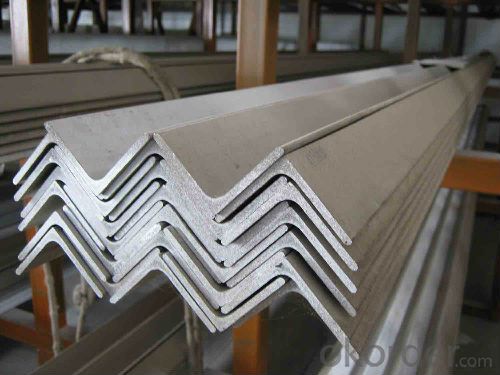

- Q: Can steel angles be painted or coated for aesthetic purposes?
- Yes, steel angles can be painted or coated for aesthetic purposes. Painting or coating steel angles can enhance their appearance and provide protection against corrosion. The process usually involves cleaning the surface of the steel angles to remove any dirt, oil, or rust, and then applying a primer and paint or a specialized coating. The choice of paint or coating will depend on the desired aesthetic and the environmental conditions the steel angles will be exposed to. By painting or coating steel angles, they can be customized to match the surrounding decor or architectural design, making them more visually appealing and blending seamlessly into the overall aesthetic.
- Q: What are the considerations for selecting the appropriate steel angle finish?
- Several factors need to be taken into account when choosing the right steel angle finish. Firstly, the intended use or application of the steel angle is a primary consideration. Different finishes offer varying levels of corrosion resistance, which is crucial in environments with moisture or chemicals. For outdoor applications or high humidity environments, a hot-dip galvanized finish is often preferred due to its excellent corrosion resistance. Conversely, a plain steel finish may suffice for indoor applications where corrosion resistance is not a major concern. The desired aesthetic appearance is another consideration. Steel angles can be finished in different ways to achieve various looks. A mill finish provides a raw, industrial appearance, while a powder coat finish offers a polished look and a wide range of color options. The choice of finish depends on the desired aesthetic effect and the overall project design. Durability is also an important factor to consider. Finishes like zinc plating or stainless steel offer enhanced durability and resistance to wear and tear, making them suitable for heavy-duty applications or high-traffic areas. On the other hand, a painted finish may be more prone to chipping or scratching, making it less suitable for long-term durability requirements. Lastly, cost plays a significant role in the decision-making process. Different finishes have varying costs associated with them, so it is necessary to balance the desired finish with the available budget. It is worth noting that while certain finishes may have a higher upfront cost, they may provide long-term cost savings by reducing maintenance or replacement needs. To summarize, the appropriate steel angle finish selection depends on factors such as corrosion resistance, aesthetic appearance, durability requirements, and budget considerations. By carefully evaluating these factors, one can choose the most suitable finish that meets both functional and aesthetic needs.
- Q: What is the difference between equal and unequal steel angles?
- Equal steel angles have equal sides and angles, meaning they form right angles. Unequal steel angles, on the other hand, have different sides and angles, resulting in non-right angles.
- Q: What are the different types of steel angles connections for beams?
- There are several different types of steel angle connections that can be used for beams. Some common types include: 1. Bolted connections: This is the most commonly used type of connection for steel beams. Bolted connections involve using bolts to secure steel angles to the beams. The angles are typically attached to the beam flanges and provide additional support and stability. 2. Welded connections: Welded connections involve using welding techniques to connect steel angles to the beams. This type of connection is often used when high strength and rigidity are required. Welded connections can be more expensive and time-consuming than bolted connections but offer superior strength and durability. 3. Clip angles: Clip angles are small angles that are used to connect beams to other structural elements, such as columns or walls. These angles are typically bolted or welded to the beams and provide additional support and stability. 4. Gusset plates: Gusset plates are thick steel plates that are used to connect beams at their intersection points. These plates are typically bolted or welded to the beams and provide additional strength and rigidity. 5. Shear plates: Shear plates are similar to gusset plates but are used specifically for resisting shear forces. These plates are typically bolted or welded to the beams and provide additional shear resistance and stability. These are just a few examples of the different types of steel angle connections that can be used for beams. The type of connection chosen will depend on various factors, including the specific application, load requirements, and structural design considerations.
- Q: What are the advantages of using steel angles over other materials?
- There are several advantages of using steel angles over other materials. Firstly, steel angles offer exceptional strength and durability, making them suitable for a wide range of structural applications. They can withstand heavy loads and provide reliable support, ensuring structural integrity. Additionally, steel angles are versatile as they can be easily customized and fabricated to meet specific design requirements. They are also cost-effective in terms of long-term maintenance and repair, as steel is highly resistant to corrosion and requires minimal upkeep. Lastly, steel angles offer excellent fire resistance, making them a safe choice for construction projects.
- Q: Can steel angles be used for shelving?
- Yes, steel angles can be used for shelving. Steel angles are commonly used in shelving systems as they provide strength, stability, and durability. They can be easily mounted on walls or used as supports for shelves, making them ideal for various storage applications.
- Q: What is the lifespan of steel angles?
- The lifespan of steel angles can vary depending on a range of factors including the quality of the steel, the environment in which they are used, and the level of maintenance they receive. Generally speaking, steel angles are known for their durability and longevity, making them a popular choice in construction and structural applications. High-quality steel angles that are properly manufactured and maintained can last for several decades or even longer. However, factors such as exposure to harsh weather conditions, corrosive environments, and lack of maintenance can significantly reduce their lifespan. To maximize the lifespan of steel angles, it is important to choose the appropriate grade of steel for the specific application, ensure proper installation, and regularly inspect and maintain them. This may include measures such as periodically painting or coating the angles to protect them from corrosion, conducting routine inspections to identify any signs of wear or damage, and promptly addressing any issues that arise. In summary, the lifespan of steel angles can vary but with proper care and maintenance, they can last for many years, providing strength and stability to various structures and applications.
- Q: How do you calculate the axial compression capacity of a steel angle?
- To calculate the axial compression capacity of a steel angle, you would need to consider several factors such as the dimensions and properties of the angle, the material properties, and the boundary conditions. The calculation typically involves determining the slenderness ratio, which is the ratio of the length of the angle to its thickness. This ratio helps determine whether the angle will fail in compression or buckling. The axial compression capacity can then be calculated using relevant design codes or formulas, taking into account factors such as the yield strength of the material and any additional considerations specific to the application.
- Q: Can steel angles be used for artistic or decorative applications?
- Yes, steel angles can definitely be used for artistic or decorative applications. Steel angles are versatile and can be manipulated and shaped to create unique and visually appealing designs. They can be used to create sculptures, decorative metalwork, decorative brackets, and architectural elements. Steel angles can be painted, polished, or finished in different ways to enhance their aesthetic appeal. Their strength and durability make them suitable for both indoor and outdoor artistic applications. Additionally, steel angles can be welded or joined together to create complex and intricate designs. Overall, steel angles offer artists and designers a wide range of possibilities for creating beautiful and decorative pieces.
- Q: What are the safety precautions when working with steel angles?
- When working with steel angles, it is important to follow a few safety precautions. Firstly, always wear appropriate personal protective equipment (PPE) such as safety glasses, gloves, and steel-toed boots to protect yourself from potential injuries. Secondly, ensure that the work area is clear of any obstructions or tripping hazards to prevent accidents. Additionally, make sure to use proper lifting techniques or equipment when handling heavy steel angles to avoid strains or back injuries. Lastly, be cautious of sharp edges and corners on the steel angles and use appropriate tools and techniques to prevent cuts or abrasions.
Send your message to us
Angle Steel Hot Rolled GB Q235 OR Q345 20MM-250MM
- Loading Port:
- China Main Port
- Payment Terms:
- TT or LC
- Min Order Qty:
- -
- Supply Capability:
- -
OKorder Service Pledge
OKorder Financial Service
Similar products
Hot products
Hot Searches
Related keywords
